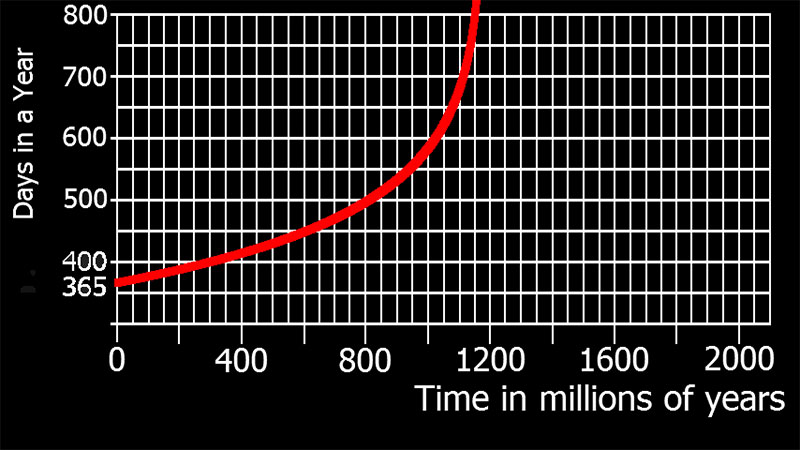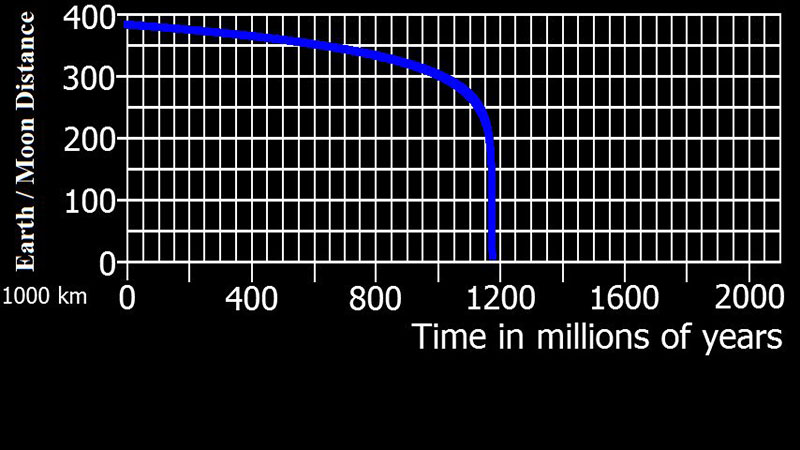One area of Geophysics that gets little attention for its degree of importance is the recession of the moon. Yes, the moon is slowly moving farther away and slowing the Earth’s rotation in the process. This was first confirmed following the Apollo moon landings by bouncing a laser off reflectors left behind by astronauts. The reflectors were designed to accurately measure the Earth-Moon distance. The measurements showed that the moon is getting further away at a rate of 1.5 inches or 3.82 cm per year. Furthermore, a day is getting longer by 1.7 milliseconds per day per century. Both effects are a result of tidal forces between them. These same forces are responsible for the high and low tides experienced twice a day.
Lunar recession has been used as evidence against the old Earth model for several decades now. Those claiming an old Earth have made every effort to respond to these calculations; some have been a challenge while others have been pathetic. The pathetic efforts generally involve projecting current rates back in a linear fashion with no regard to the actual forces involved, this naturally fails because gravity is not linear. More challenging efforts involve complex calculations involving the effect of continental positions on the tides.
This series of articles is the result of an objective study on whether or not Lunar recession is a limiting factor on the age of the Earth and whether or not it is compatible with the claim that the Earth is 4.5 billion years old. One way in which this study is different from most earlier ones is that it only considers the forces acting on the two bodies. Most other studies simplify the calculations by assuming that angular momentum is conserved in the Earth-Moon system. This study considered the possibility that some of the angular momentum could be lost from the Earth by other means such as frictional heating or other factors. The results show exactly what it would take for Lunar recession to have been going on for 4.5 billion years as well as whether or not it agrees with other data.
Limiting Factors
There are several limiting factors concerning lunar recession. One of the most important factors is the phase angle (θ) Which is the angle between high tide in the location of the moon resulting from the Earth's rotation. If θ > 90 o then the Earth rotation would accelerate and it could never drop below or even reach θ = 90 o. With θ < 90 o then the Earth rotation slows, and it can never get above or even reach θ = 90 o.
If the Earth's surface rotational velocity were greater than orbital velocity the outward stress on the planet would eventually tear it apart. If the Earth's surface rotational velocity were equal to or greater than orbital velocity, then it could not form by natural means. The Earth's surface rotational velocity must be less than the orbital velocity of about 4.5 miles per second. (Rotation period of 1.5 hours) If the Moon's initial orbital radius were less than the Roche limit then the Moon could not have formed from gravitational collapse, as a result, its original orbital radius had to have been more than the Roche limit. The Moon's orbital radius must be greater than the Earth's Roche limit for the Moon. (15,562 km) Note that with a faster rotation rate the geostationary orbital radius would be smaller and could at some time in the past be less than the Roche limit.
Backwards Projection
This is the first of four backward projections of lunar recession each based on four different conditions. The first is a straightforward, backward projection with no tweaks. The other projections were made to deal with common mistakes made on the issue. Sometimes these mistakes are made by accident but other times they are made to hide the problems this data makes for a 4.5-billion-year-old Earth.

This is a backward projection of the number of days in a year based on forces acting on Moon and Earth.

This is a a backwards projection of the distance of the moon based on forces acting on Moon and Earth.
This is a straightforward, backward projection of the relative proper secular breaking of the Earth's rotation and lunar recession data made without any tweaks. The current data is simply plugged into the math. as shown earlier. The result is that the Moon would have been at the Earth's Roche limit of 15,562 km 1.171 billion years ago. This is far short of the 4.5 billion years commonly given for the age as the Earth. This suggests that the Earth-Moon system cannot be anywhere near 4.5 billion years old. These results are similar to other calculations done by others showing these calculations are valid.
This study will be continued in the next article providing additional projections demonstrating why do such a problem for a 4.5-billion-year-old earth.
---------------------
Help support these articles.
https://tinyurl.com/GSM-give yeah
References
http://gscim.xyz/Articles/Advanced/Lunar_recession_and_the_Age_of_the_Earth/
http://gscim.xyz/Articles/Intermediate/Lunar_recession_and_the_Age_of_the_Earth/












